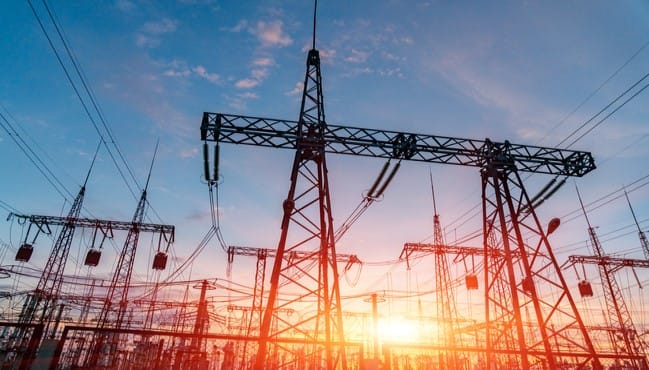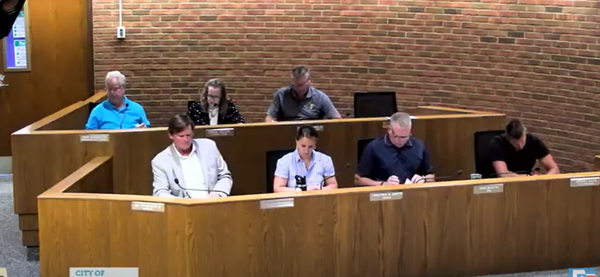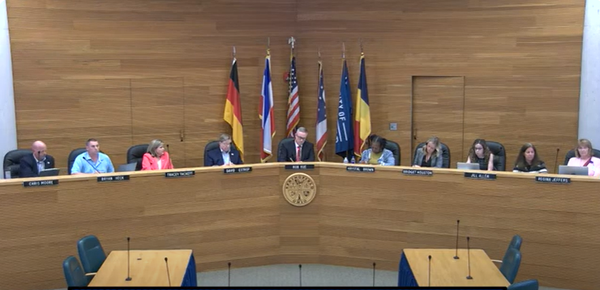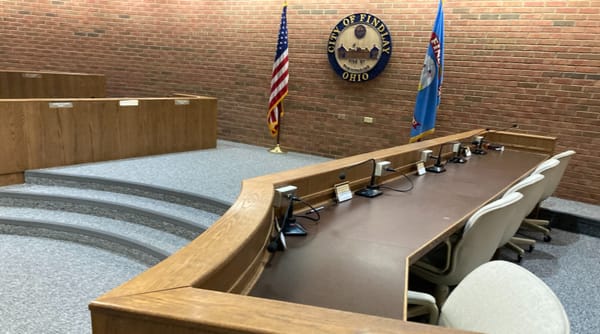SB 2 and HB 15: Read the Small Print

BY NICK ROGERS
STATEWIDE - Over the past few months, many within Ohio government and the energy industry have been sounding the alarm over the possibility of an overloaded energy grid. The culprit? 176 data centers (and counting) that have sprouted up like weeds, mostly in central Ohio. To address this issue, Senate Bill 2 and House Bill 15 are making their way through the statehouse; measures which encourage more “base load energy” plants through tax incentives, a supposedly more stringent review process, and an ending of subsidies for the Ohio Valley Electric Corporation (OVEC)’s unprofitable coal and nuclear plants. On the surface, these new bills seem positive for Ohio energy customers and grid resilience. A deeper dig reveals cracks in the plan.
SB 2 ostensibly sets out to create a fairer, more competitive and productive energy market by giving tax incentives to new power plants built in Ohio while, at the same time, barring “pole-and wire” utilities like AEP, First Energy, and Duke.
SB 2’s sponsor, Sen. Bill Reineke, R-Tiffin, said, “We’re making it clear that generation is separate from transmission.” He added, “There will be no (tangible personal property) tax on new generation projects, and a reduction from 88% to 25% on new transmission, distribution, and pipeline infrastructure.”
A major selling point for SB 2 is its removal of dreaded energy security plans (ESPs); a tactic utilities have previously relied on to wiggle out of the rigorous rate setting process under the guise of financing grid improvements via tariffs or “riders” on customers’ bills.
The “legacy generation rider” – reapproved by the Public Utilities Commission of Ohio (PUCO) in 2024 – is the cost-recovery means by which scandal-ridden HB 6 has charged consumers for OVEC’s failing plants (essentially an ongoing bailout paid by Ohio consumers to the tune of $679 million over the past 10 years). Under SB 2, this rider would be eliminated, but critics fear other subsidies could be forthcoming if these bills are passed.
One of these subsidies could come in the form of a sort of “crowd funding” of many new, small, community-based renewable energy projects proposed in HB 15. David Murray of TurningPoint Energy supports the plan, saying, “The key element of community energy projects is that we avoid costly transmission infrastructure.” He added, “We do not need to rely on the regional electricity grid. We, as a developer, will pay for the cost of interconnecting our projects to the distribution grid, which deliver benefits to all utility customers and enhance grid resiliency as well.”
Maureen Willis of the Ohio Consumer’s Council is skeptical.
“While we support renewable energy, we continue to advocate for its development in the competitive market without subsidies from consumers,” Willis said. “Subsidies for the community solar (program) may be unintended but are likely to occur under the bill as written.”
Willis is worried that new companies will engage in “cost-shifting,” i.e. engaging in a process of “lost distribution revenue” in which those companies add charges elsewhere to guarantee that they cover the cost of investments (the very sort of shenanigans these new bills –especially HB 15 – claim to address).
Regarding a supposedly more stringent review process touted by HB 15, Willis said, “The added review should provide consumers some protection against ‘gold-plating’ transmission investment and charging utility consumers for that.”
Essentially, the way utilities have operated for a while now has involved “supplemental transmission projects,” a back door for charging customers. Under HB 15, a “major” project would receive heightened scrutiny. A smaller project would not. Could this be the reason behind the push for many small renewable energy projects in the bill? Possibly, but the main focus of both these bills seems to be the creation of “base load” plants in the form of natural gas.
Senate President Rob McColley said Ohio needs “…primarily base load power, primarily natural gas that can be extracted here from inside the state, and that’s going to be a win-win for the state of Ohio.”
Cathy Cowan Becker of the Buckeye Environmental Network has a major problem with specifics of this gas fired plan.
One issue she takes is with the shortening of review processes. Ohio Siting Board reviews for power plants, in the past, have taken months or years. These bills would shorten this process to 120 days (45 days for electric generation plants, gas pipelines in a “Priority Investment Area,” and major utility facilities defined as 50 Megawatts or more). Unlike large renewable energy proposals, local governments would have little-to-no say over these new plants. She believes 45 days is not nearly enough time to sort out important minutia related to the plants’ impacts. Not exactly stringent.
And speaking of impacts, there is the environmental one. Cowan is deeply concerned over McColley and House Speaker Matt Huffman’s plans to obtain the gas supply they seek by fracking state parks and wildlife areas. “I want to be aggressive about that in the House of Representatives,” Huffman said.
According to Cowan, the last four nominations to frack Ohio’s parks and wildlife areas received 923 public comments. Only one of those comments was in support of the fracking.
“They could go to this guy who owns (the adjacent) field, offer him probably more money than he’s ever seen, buy that field, propose to put a 100-megawatt gas plant there, and that would have a 45-day approval process,” she said. “And the local officials in Hilliard would have no say.”
SB 2 and HB 15, like so many “consumer-centric” bills, look great on the surface. As usual, problems lie below. Will these problems be ironed out or considered collateral damage toward much-needed economic growth in the state?




